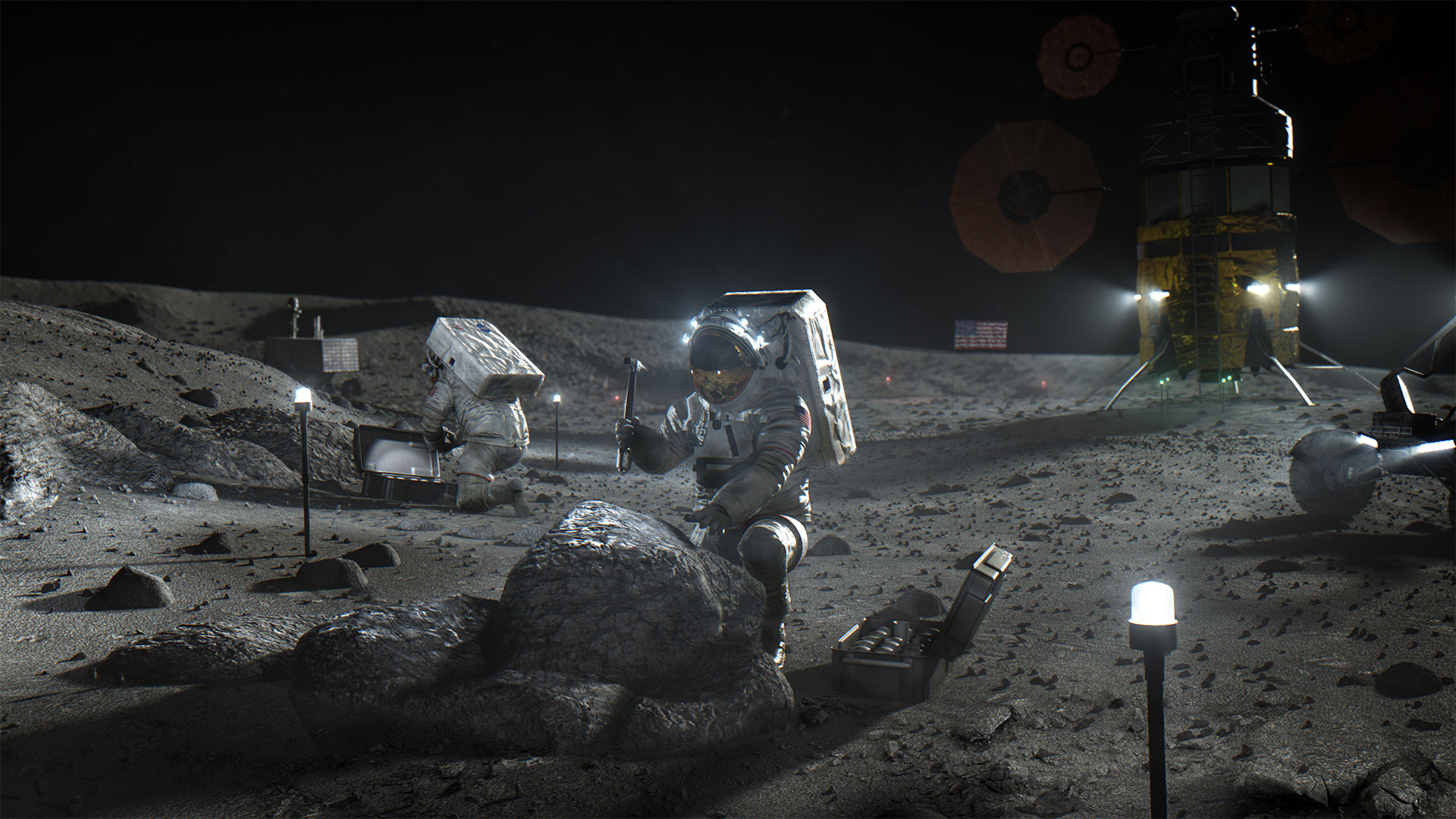Press Release
NASA Extends Johns Hopkins APL Leadership of Lunar Innovation Initiative
NASA has tapped the Johns Hopkins Applied Physics Laboratory to continue supporting the agency’s Lunar Surface Innovation Initiative (LSII), which aims to spur the development and deployment of technologies enabling humans to live and work on the Moon.
Headed by NASA’s Space Technology Mission Directorate, LSII is pursuing technologies in areas such as power systems, in situ resource utilization, dust mitigation, excavation and construction, and access and operations in extreme environments. Through its Artemis program, NASA aims to land the first woman and next man on the Moon and use innovative technologies — including those developed through LSII — to explore more of the lunar surface than ever before.
APL is a university affiliated research center with extensive systems engineering expertise in space mission and technology development for NASA, the Department of Defense and other government agencies. The Laboratory has deep experience in the full range of systems NASA is pursuing for lunar exploration, as well as six decades of designing, building and operating spacecraft and science instruments that have been dispatched across the solar system — from the Sun to Pluto and beyond.
“We’re excited that NASA continues to trust APL to help it to overcome science, engineering and technology challenges and seize opportunities supporting a sustained human presence on the Moon,” said Mike Ryschkewitsch, head of APL’s Space Exploration Sector.
The APL LSII team, headed by planetary scientist Ben Bussey, will continue to operate the Lunar Surface Innovation Consortium (LSIC) and provide NASA with science and engineering integration expertise. It will also lead analysis of lunar simulants — chemical and technical representations of the materials designers would need to test their technologies — and assist NASA in formulating and assessing technology research opportunities.
Launched in 2020, LSIC, led by APL planetary scientist Rachel Klima, is a nationwide alliance of more than 300 universities, nonprofit research institutions, commercial companies, NASA centers and program offices, and other government agencies with a vested interest in the nation’s campaign to establish a sustained presence on the Moon. LSIC is designed to harness the creativity, energy and resources of the nation to keep the United States at the forefront of lunar exploration.
The consortium holds monthly capabilities-focused meetings and biannual community meetings, and offers mentorship opportunities between members. For more information, visit http://lsic.jhuapl.edu.
The LSII work comes under a task order NASA added to an existing contract with APL, for up to $30 million over up to three years.
